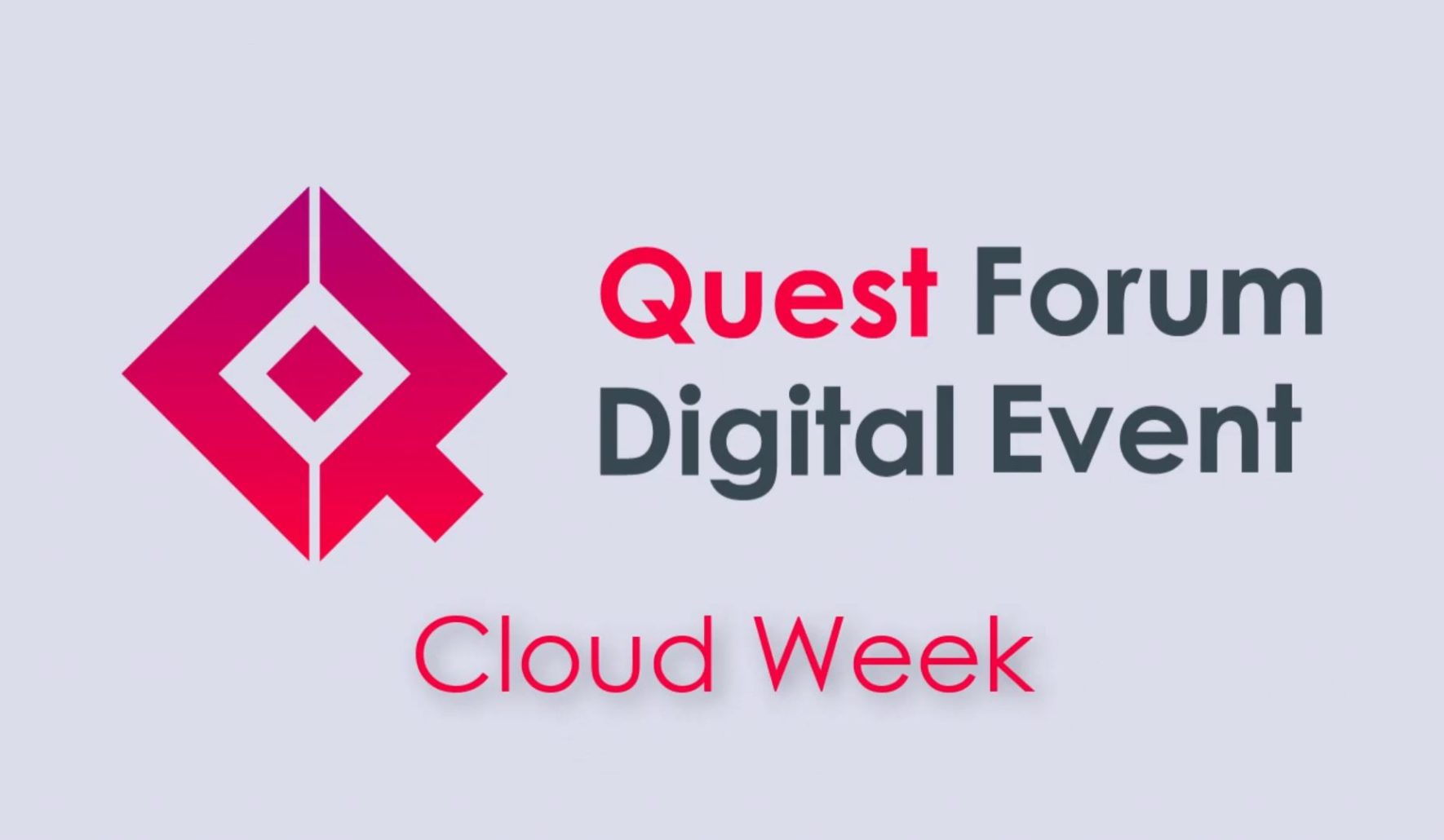Moving HCM to the Cloud: Why, When, and How
-
Posted by Harry E Fowler
- Last updated 11/04/20
- Share

During Quest Forum Digital Event: Cloud Week, Lauren Antone and Erin McGannon, two Product Marketing Managers at Oracle, presented why, when, and how organizations are moving human capital management (HCM) to the cloud.
Drivers Behind Moving to the Cloud
Technology is disrupting industries all over the globe, and the pace of change is not slowing. With this rapid innovation, on-premise systems cannot keep up. Instead, enterprise investments are going into the cloud and emerging technologies.
Cloud HR systems are riding this cloud investment wave with artificial intelligence (AI), machine learning, blockchain, and chatbots. These innovations enable the cloud to outpace on-premise HR systems. With cloud technology, teams can introduce new business models, rethink the customer experience, and digitize processes.
With the impact of COVID-19, HR leaders must support a more mobile, global, and remote workforce than ever before. As employees move to a digital workplace, HR teams will carry the primary responsibility for leading organizations through unprecedented changes.
As the “people-people,” HR teams are equipped to architect a more human experience at work. Oracle refers to this as “work made human.” As the world changes, it’s imperative to create a stable and empathetic workplace that brings out the human in all of us. In our private lives, we rely on modern technologies like FaceTime and Alexa. Employees expect work technologies to be just as helpful.
During and after the pandemic, businesses must be positioned to react quickly, make intelligent predictions, and create operational efficiencies to sustain success. On-premise systems won’t provide these capabilities.
Legacy systems provide:
- Rigidity and complexity with hardware that requires substantial IT assistance
- Clunky interfaces that disrupt the user experience
- Heavily manual and disconnected systems
- Less security since the customer is responsible for backups and testing
- Limited access to modern tools like social and chatbots
In a recent study, 89 percent of leaders said they believe digital transformation is the driver of change and growth. To effectively utilize digital tools in HR, Oracle recommends focusing on three key areas:
- Delivering a best-in-class employee experience, hyper-personalized and intuitive for each user
- Driving business agility with your people strategy
- Improving operational excellence by removing complexity and adding automation
Moving to Cloud: Why, When, and How
To understand the landscape of cloud migrations, Oracle conducted a global survey for PeopleSoft users. Key takeaways are shared below.
Roughly 99 percent of users plan to migrate to HCM Cloud in the next 12-24 months.
- 75.1 percent plan to migrate to the cloud within 12 months
- 23.7 percent plan to migrate to the cloud within 12-24 months
- 1.3 percent have no plan to migrate to the cloud
While HR leaders typically plan to lead the move, leadership regularly shifts to IT once projects begin.
The takeaway: It’s essential for HR and IT to maintain a tight partnership.
Planned – Who Leads the Move
- 6 percent – Line Of Business
- 30 percent – IT Led
- 64 percent – HR Led
Actual – Who Leads the Move
- 10 percent – Line Of Business
- 55 percent – IT Led
- 35 percent – HR Led
The biggest driver behind HCM Cloud migration is improved user experience.
Ranked: Drivers Behind HCM Cloud Migration
- Improved user experience – 4.3
- Attract/develop/retain talent – 4.2
- Eliminate upgrade cost/complexity – 4.2
- Automatic access to new features – 4.2
- Business agility/scalability – 4.2
- Improved insight/visibility – 4.2
- Access to modern tech – 4.2
- Less security burden/risk – 4.1
- Corporate mandate to move – 4.1
- Manage change/shifts – 4.1
- Lower IT landscape complexity – 4.1
- Eliminate support/maintenance – 4.1
- Vendor dissatisfaction – 3.6
The biggest barrier to the cloud is departmental demands.
Ranked: Cloud Barriers—Biggest to Smallest
- Departmental Demands
- Customization
- Technical/IT skills
- Turnover in key positions
- Group consensus
- Budget
- Business analysis skills
- Management buy-in
In order to break down barriers, survey respondents suggest several activities.
Ranked: Activities to Break Barriers—Most Important to Least Important
- Building a Business Case with ROI
- Third-party Consultant to Select Solution
- Third-party Consultant to Manage Migration
- Identifying Executive Champion
- Vendor Demos/Assets
- Hiring Additional Resources to Manage Migration
- Training Curriculum for Internal Skills
Every customer is different, but Core HR is a popular first step to migration.
Ranked: First Modules Implemented—Most Popular to Least Popular
- Core HR
- Strategic Workforce Planning
- Workforce Mgt (T&L, Absence)
- Learning
- Benefits
- Compensation
- HR Help Desk
- Performance Mgt
- Payroll
- ERP
- Recruiting
Roughly 12 months after implementation, Oracle customers realized business benefits.
- 79 percent improved reporting productivity
- 34 percent increased staff productivity
- 32 percent improved performance management
- 11 percent increased percentage of right hires
- 48 percent reduced maintenance cost of legacy HCM systems
- 70 percent reduced compliance costs
- 44 percent reduced time to hire
- 68 percent reduced payroll processing time
Currently, Oracle Cloud HCM is the broadest and deepest solution in the marketplace that supports all aspects of HR, reimagines HR/talent processes, and adjusts rules and transactions easily.
Oracle Cloud HCM’s digital assistant, responsive HR Helpdesk, and AI recommendations enable employees to quickly get answers to questions. Workforce Health & Safety solutions track incidents and enable reporting with follow-up actions, which helps employees feel protected and safe. Additionally, Opportunity Marketplace allows HR leaders to boost career mobility and fill talent gaps as they adapt to changing business needs.
Change is inevitable, and on-premise solutions are increasingly outdated.
To learn more, check out the Quest Forum Digital Event: Cloud Week presentation below.

